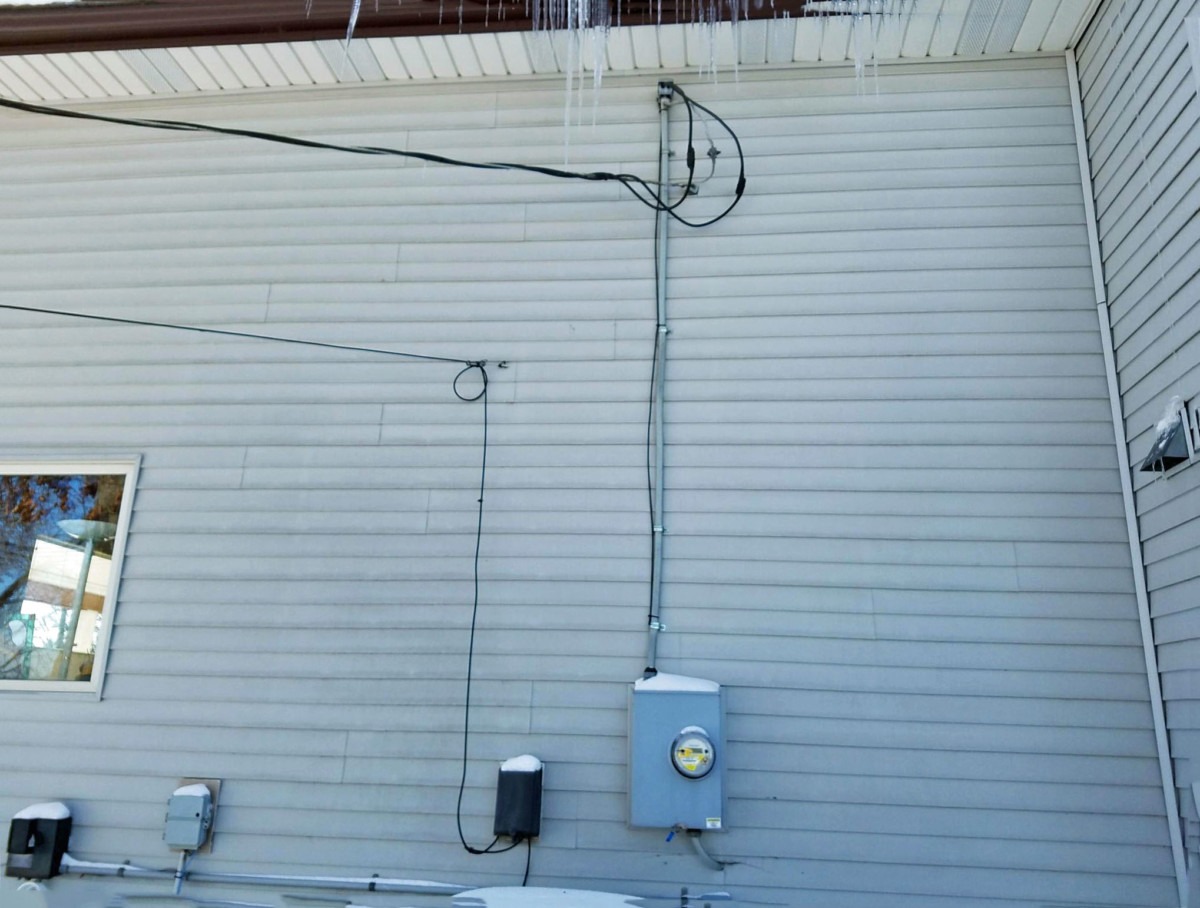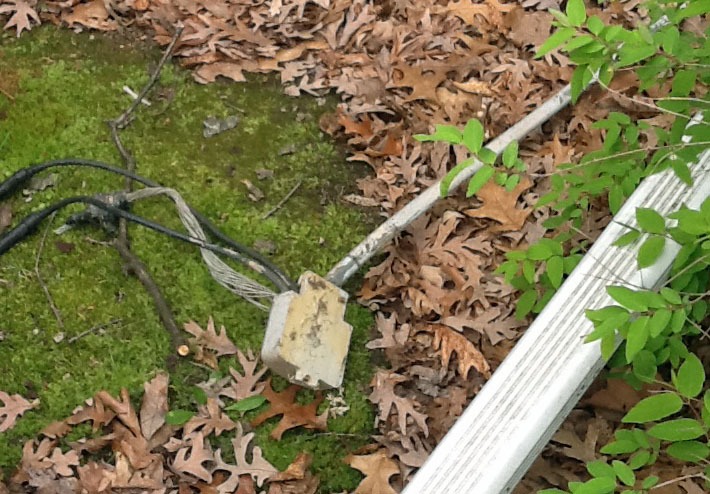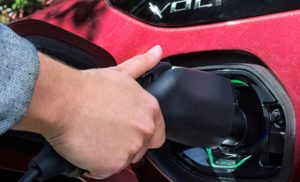Electrifying Tip – Avoid a Truly Scary Halloween
Electrifying Tip – Trim Your Trees
Electrifying Tips – Electrical Mysteries
Question:
How do I solve a problem that defies explanation–an electrical mystery?
Answer:
by Carl Evanson, Master Electrician
You replace a bulb in the living room and the light won’t work. But the same outlet successfully powers other devices. Or a factory experiences intermittent power. Confounding electrical problems can sure seem like mysteries.
What if every second outlet in your house didn’t work? A homeowner called us in. By deduction we determined the problem must be outside. Consumers Energy had installed a new smart meter but had not removed the plastic tab. That cut power to the house by half. In electrician talk, one of the two “legs” of power was not making it inside. The homeowner was happy he got the other half of his power back. His mystery was solved.
Another homeowner was baffled. No matter how many times he reset the breaker, power in two bedrooms stubbornly refused to flow. As we traced the circuits, we found an attic bonus room was on the same breaker. Plugged in was an old pinball machine. It had a dead short. The homeowner found it mind-boggling that a tiny light in this monster machine could create such havoc.
Were these really mysteries?

Consider the way an electrician looks at it. He or she converts a mystery into a puzzle. Why is this important? A mystery implies elements of the problem are unknowable. A puzzle can be solved. He or she will sort the pieces in thought, put them together, and seek the missing piece. That missing piece leads to the solution.
Here is a truth. Electricity is entirely logical. When you flip a switch, the light goes on. The path electricity follows is the circuit. And like a computer program, if A happens to the circuit, B will result. That doesn’t mean you can’t be tricked. As in the story above, a missing “leg” will cause a bizarre situation. Similarly modern electronic devices require a steady electrical platform that meets standards. That phone, flat screen or LED light may act weird when those standards aren’t met.
I’ve heard of broadcast facilities having unsolved electrical issues. The frustrated engineers are known to blame the difficulty on having built the station on an Indian burial ground and the dead are fighting back! The humor is momentary relief for the frustration. Yet, the engineers know the unexplained has an answer. Why? Because electricity is logical. There are no mysteries, only puzzles waiting to be solved.
Electrifying Tips – Charging Your Car
Question:
If I buy an electric car, how do I charge it at home?
Answer:
The Detroit Auto Show is spotlighting an ever-increasing number of hybrids and electric cars. To charge a car at home, you need to be set up for it. Chevrolet says with “a professional installed 240-volt charging station, Volt can recharge in as little as 4.5 hours to provide up to 53 pure electric miles.” And from Tesla.com, “Installing a 240-volt outlet provides more power than a standard outlet to charge your Tesla faster.”
What’s involved? A Plus Electric’s Carl Evanson says “a 240-volt outlet requires a dedicated feed from your electrical panel to the car charging station.” In purchasing a vehicle, consider that a typical 240-volt installation costs about $250-$400, plus the electrical inspection. The total expense can run more. Volt’s 240-volt AeroVironment 32-Amp home charging unit is $699 (MRSP). Tesla’s wall connector with 24-foot cable lists at $550. That’s on top of the 240-volt installation.
“We’re doing an increasing number of these installations, including at Jackson College,” comments Carl. In addition to charging at home, there will be more public stations. “Keep in mind that charging takes longer, sometimes at lot longer, than filling up your gas tank.”
There are other charging options, but they may not be satisfactory over the long haul. Chevrolet says you can also use a 120-volt portable charger. At the “default 8-amp setting” a charge would take 19-hours. Using a 12-amp setting, the charging time is reduced to 13-hours. But you will need to know if your 110-volt outlet can handle 13 amps.
Link to Tesla’s charging page. Link to Chevrolet’s Volt.
Electrifying Tip – Power Line Down
Question:
If I tree limb knocks down the power line to my house, what should I do?
Answer:
The first concern is your safety and those around you. Consumers Energy says “stay at least 25 feet away from a downed wire.” They add “steer clear of water, trees, debris and fences” nearby and contact them as soon as possible (800-477-5050). Carl Evanson, A Plus Electric’s master electrician, adds another note of caution “a downed wire can electrify areas much farther away than you’d guess as electricity disburses in surprising ways. The results can be tragic.”
Consumers Energy is responsible to repair a downed wire up to the point where it touches your house. If any part of the lead-in to your house is damaged, you will need to call an electrician. That includes the mast, as in this photo.

Below is a photo of a mast on the ground after it was ripped from the house by a limb falling across the line to the pole.

Consumers says falling limbs, broken or leaning trees are the top causes of power outages. A close second are weather related issues including wind, rain, lightning, snow and ice.
Click here to report an outage to Consumers Energy. For a map that illustrates the location of outages and measures how widespread they are, click here. To be notified by text or email about outages, you can sign up through this page, but you need to create a sign in and password, if you don’t already have one.
Electrifying Tip for the Holidays
Question:
With holiday season fast approaching, what can you do to keep outdoor Christmas lighting safe?
Actually, quite a bit. If you don’t look at anything else, be sure to check out the first item.
Answer:
When using electricity outside, you can avoid major problems by using ground fault circuit interrupters (GFCIs). Electricity always attempts to reach ground, and dampness speeds its progress. You don’t want 110 volts to go through you on its way to the ground nor do you want a bad connection to electrify nearby areas.
 A GFCI circuit instantly cuts the power if it senses ground. The GFCI saves you, your family, or pets from electrical shock that could be fatal.
A GFCI circuit instantly cuts the power if it senses ground. The GFCI saves you, your family, or pets from electrical shock that could be fatal.
If your circuit is not GFCI, you can easily acquire a portable device at stores that carry electrical items (available at Ace Hardware, Brooklyn). It’s a simple, but effective way to avoid tragic consequences.
Though not exhaustive, here are some more important tips.
Make sure your extension cords match intended usage—are they designed for outdoors and robust enough to handle the load? Is the insulation intact?
Keep extension cords and light strings out of snow and standing water.
Keep away from power lines—on your house or otherwise. Aluminum conducts electricity, so use wooden or fiberglass ladders.
Click for additional information from the U.S. Product Safety Commission.
Then, of course, there is the Griswold method!
https://www.youtube.com/watch?v=0ar-__ub0rc
Electrifying Tip – Power Out
Question:
If power is out in part of the house and all the circuit breakers appear to be on, what should I do first?
Answer:
Circuit breakers can sometimes be in the “on” position, but actually they have tripped and have turned off power to the circuit. You can quickly assess if this has happened by simply switching the breaker to “off”–then turn it back on. If this solves the problem, good! But an underlying question still has not been answered. Why did the breaker trip in the first place? For your own safety and peace of mind, check the outlets and fixtures involved for problems. If you see none–and the breaker trips again–there is some issue that should be investigated. This is a situation when an electrician can be a valuable resource.










